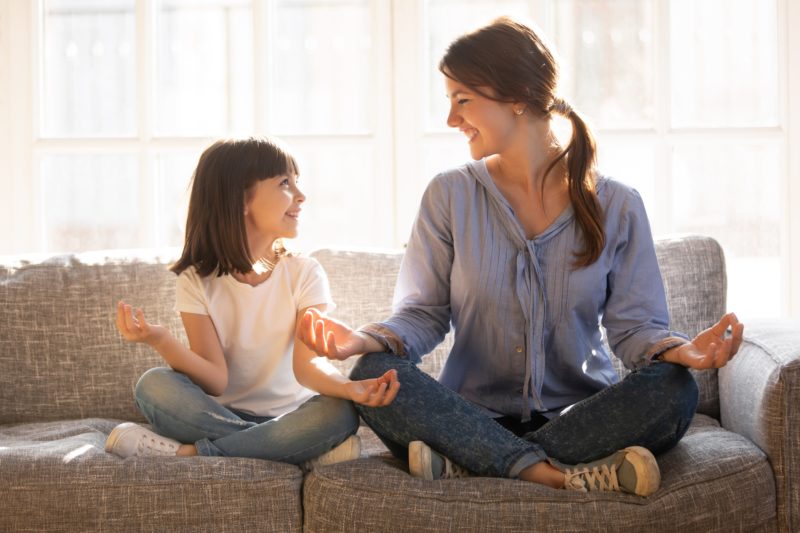Mindfulness and Occupational Therapy
Mindfulness is about bringing one’s attention to experiences, being present in the moment, and bringing one’s awareness back to one’s self in order to connect the mind and body. It is a set of tools and alike of medication that can assist with pain, anxiety, and regulating emotions. Mindfulness and occupational therapy come hand in hand in that it is a person-centred approach where one must focus their attention on current experiences, and have greater awareness of self and the mind-body connection in order to assist with our everyday occupations and roles.
Repetition and practice are required when it comes to mindfulness. With practice and repetition, fMRI studies have shown that mindfulness can actually produce positive changes in your brain’s structure (Alice G. Walton, 2018). In this way, mindfulness and occupational therapy can positively impact children’s lives.
Ways to Practice Mindfulness
Guided Mindful Meditation
An Occupational Therapist can guide your child to become present and centred with their thoughts through guided meditation. Through closing their eyes, quiet room, dim lighting, staying still and music or silence and listening to their breathing and the sounds around them are techniques that can be used in mindfulness. This can be completed before or after a session, whenever they feel they need to be centred, re-focus and relaxing one’s body and mind.
Use of Body Scans
Focuses attention on various areas of the body and sensations felt. The child lays still, in a dim-lit room, eyes closed and accompanied by soft music, or the Occupational Therapist (OT) talking. To help the child become aware of their body, the OT walks through their body.
Mindful Movement and/or Mindful Yoga
Orients children towards purposeful, thoughtful movement and mind-body connection, beneficial at the beginning of a session or in the morning or after school to ‘warm-up’ or ‘wind down’ and provide your child with body awareness.
Breathing Exercises
Focus on the breath and/or slowing the breath to promote relaxation and focus on the present moment. It is also beneficial as a self-regulation strategy when things become frustrating, one becomes angry or upset. Breathing can centre and provide your child to feel present and allow them to focus on their breathing other than the problem.
When to Practice
Daily practice leads to greater, stronger neuronal connections and a change in mindset. Mindfulness does not just have to be in an occupational therapy session, it can be at home, at school and in the community. It also doesn’t have to be long; it could be as quick as 30 seconds of deep breathing, eyes closed while in the car, in a lift or out in the playground.
Some children might have difficulties following verbal commands, such as “breath in, breath out”, so role modelling can be a great tool. Role modelling can be offered by having an adult to breath next to the child, or through educational videos.
In addition, is always great to start practicing when the child is happy and ready to learn, instead of trying using those resources when the child is experiencing uncomfortable feelings. Once they’re familiar with the strategies, the practice can be encouraged during challenging situations.
The Benefits of Mindfulness
Anxiety
Through learned mindful attention and refocusing on the present moment and current lived experience, children can learn to reduce the volume of distracting thoughts that provoke worry and anxiety. Occupational Therapists can then understand and highlight aspects that are provoking this behaviour and use mindfulness as a tool to compact these stressors and use it as a tool to do so.
Self-Regulation
Another great target area for mindfulness interventions is self-regulation. Aspects of mindfulness including the body scan and breathing exercises help improve a child’s self-awareness regarding their body and the sensations and emotions they are feeling. The 8th sense of interoception is tapped into as this system gives us the ability to feel what is happening inside our body. The interoceptive system has a foundational role on our general physical and emotional regulation, it is not surprising that it also directly impacts several other important skill areas. Children experiencing difficulties establishing and understanding this sense often have trouble with self-regulation.
Mindfulness Summary
When children practice focusing skills such as mindfulness, they become aware of what their minds are really up to. Mindfulness practice helps children deal with tough emotions and even improves impulse control. Mindfulness gives children the tools to focus their minds, calm down, and reflect on a situation when they need to make a choice or the choices they have made. When we’re aware of our inner life and are able to observe it, emotions and thoughts can lose their control over us, and we get more time and inner resources to respond.
If you think your child could benefit from improving their ability to self- regulate their emotions through using some mindfulness techniques, please give us a call on 02 9913 3823 or email hello@occuaptionaltherapy.com.au.


